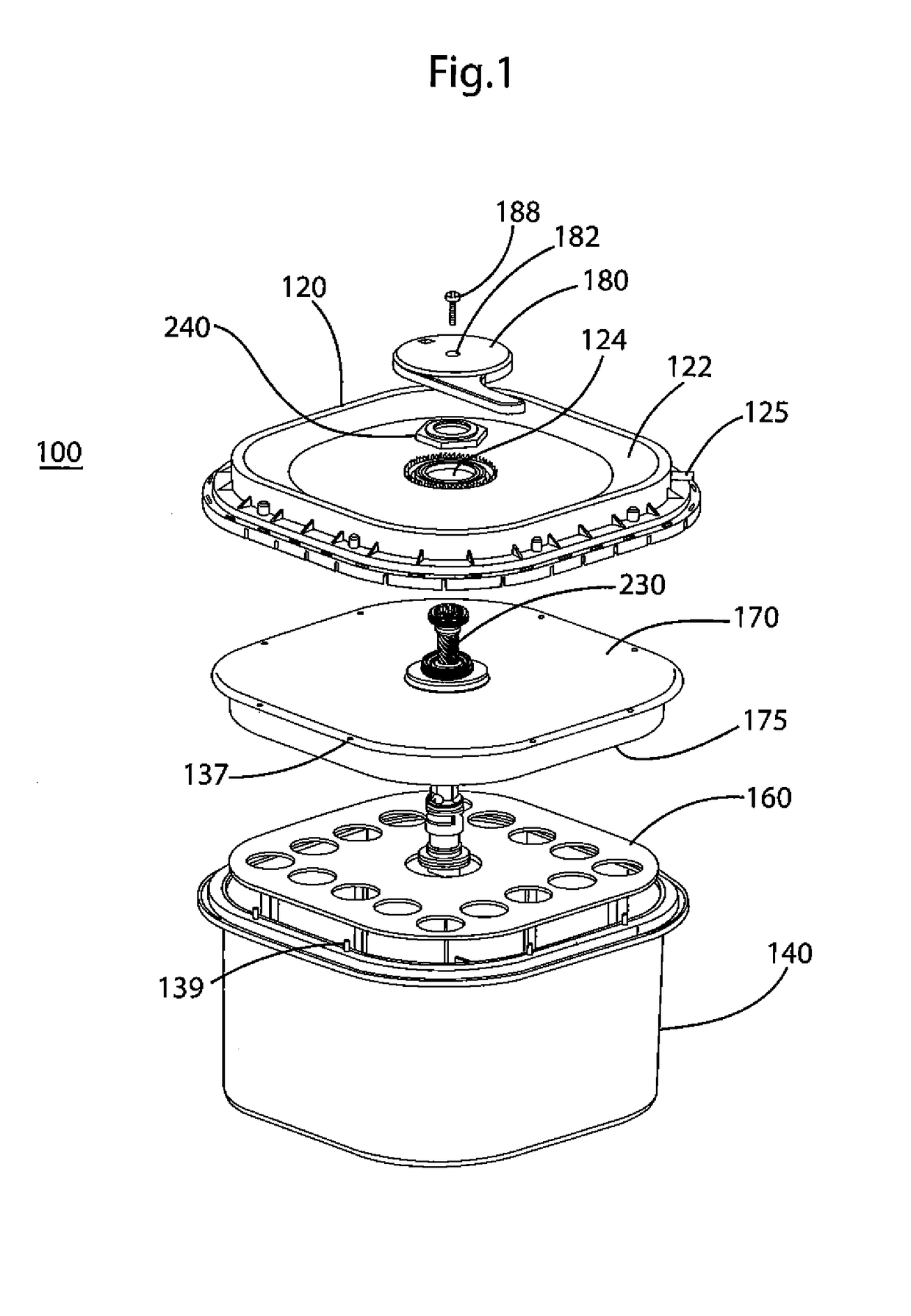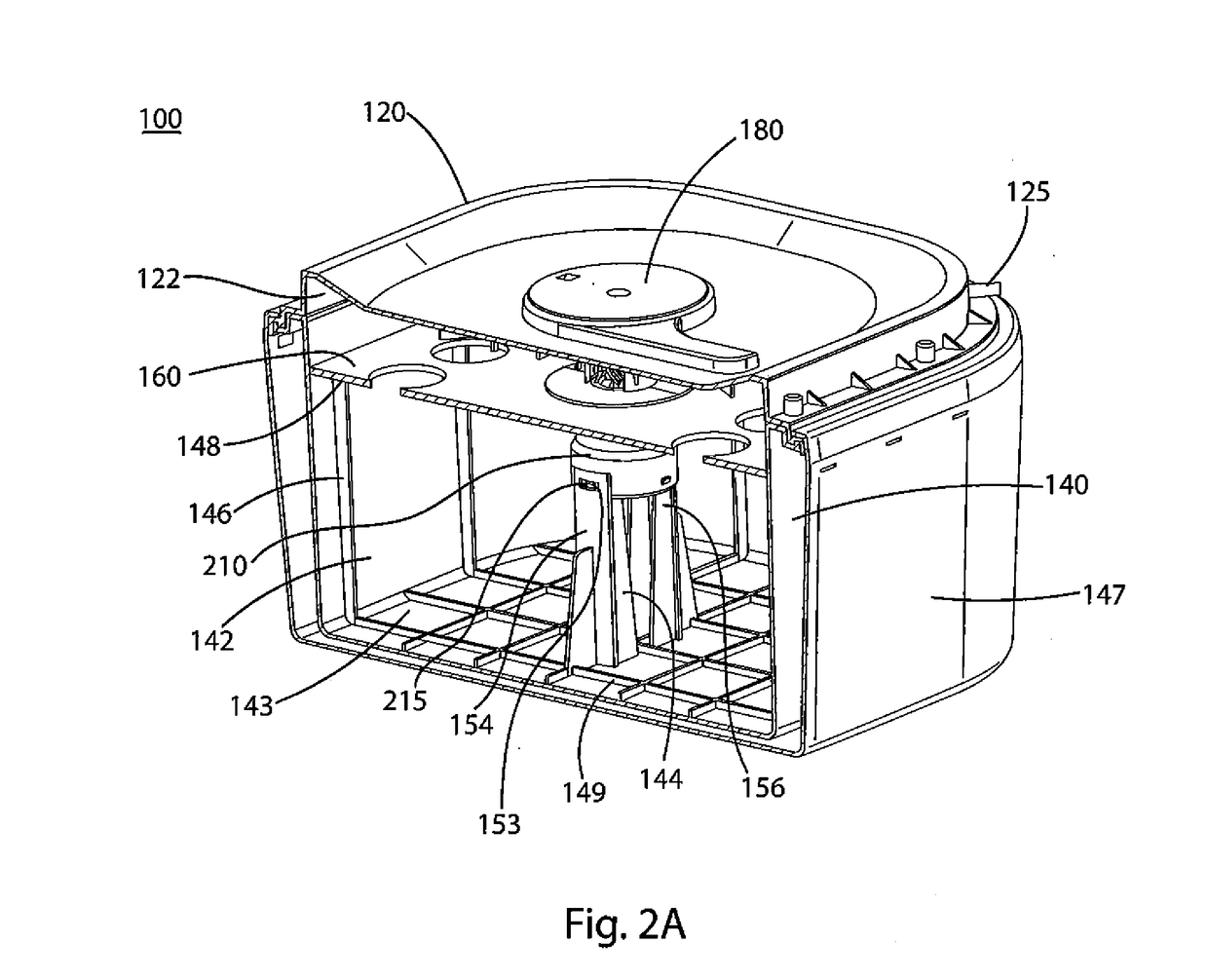Portable chemical oxygen generator
- Summary
- Abstract
- Description
- Claims
- Application Information
AI Technical Summary
Benefits of technology
Problems solved by technology
Method used
Image
Examples
Embodiment Construction
[0061]A portable oxygen generator and the method of making and using such a generator according to embodiments of the present invention are provided. As described below, the present invention discloses a mechanism whereby a device containing an adduct chemical such as sodium percarbonate (“NaPerc”), which releases oxygen when mixed with water (or other liquids) in the presence of a suitable catalyst, e.g., manganese dioxide (“MnO2”), is held in a dry state and separated from the catalyst until such time as oxygen is required. An example of such a time is when intervention in a respiratory-related medical emergency is required, at which point an operator will initiate the process detailed below. Because generating oxygen from such adducts is usually exothermic and usually required over an extended period of time, a reaction-moderating chemical, for example, trisodium phosphate dodecahydrate (“TSP”), may also be provided. This moderating chemical is provided as tablets, capsules, or o...
PUM
 Login to View More
Login to View More Abstract
Description
Claims
Application Information
 Login to View More
Login to View More - R&D
- Intellectual Property
- Life Sciences
- Materials
- Tech Scout
- Unparalleled Data Quality
- Higher Quality Content
- 60% Fewer Hallucinations
Browse by: Latest US Patents, China's latest patents, Technical Efficacy Thesaurus, Application Domain, Technology Topic, Popular Technical Reports.
© 2025 PatSnap. All rights reserved.Legal|Privacy policy|Modern Slavery Act Transparency Statement|Sitemap|About US| Contact US: help@patsnap.com



